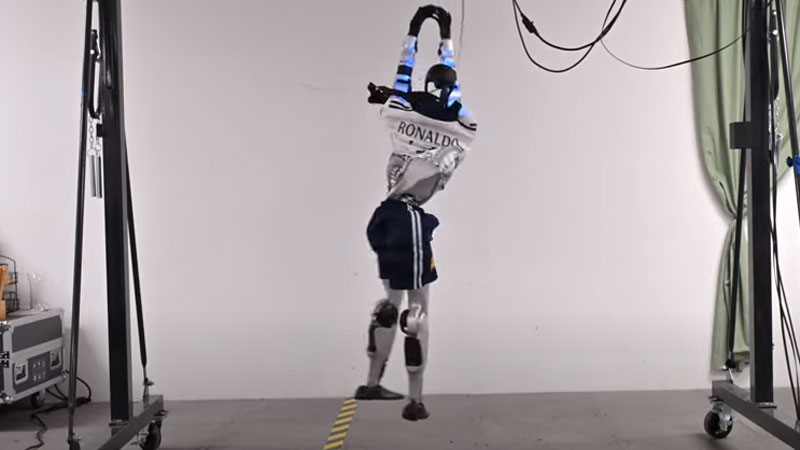The achievement of flexible and coordinated movements of the whole body remains a serious problem for humanoid robots due to the inconsistency of the dynamics between the simulation and the real world. Meanwhile, it is human -like robots that have the maximum potential for integration into human civilization due to the similarity of their bodies with human ones. Existing approaches to teaching robots movements of people are slow and ineffective. But there is a solution.

The robot repeats Ronaldo’s jump. Image source: Carnegie Mellon University
A promising technology to reduce the clumsiness of robots was presented by researchers from the NVIDIA and the University of Carnegie – Mellon (Carnegie Mellon University). ASAP (Alangning Simulation and Real Physics) technology, designed to combine the modeling and physics of the real world, turned out to be quite effective for reducing inconsistencies in robot movements.
ASAP technology operates in two stages. At the first stage, the behavior model is studied on the basis of videos with the participation of real athletes – football players, basketball players, baseball players and others, for example, with the participation of Cristiano Ronaldo. At the second stage, robots repeat the motion based on simulation, and the sensors record what is happening. Then, a comparison of the simulation and its development by robots in the real world is carried out. All this boils down to a more subtle setting of simulation, which ultimately simplifies the training of robots to elegant movements in the physical world.
According to researchers, ASAP technology allows you to approximately reduce the frequency of errors when teaching robots to the movements of people. A full article about the work is posted on the Arxiv website and is freely available at the link.